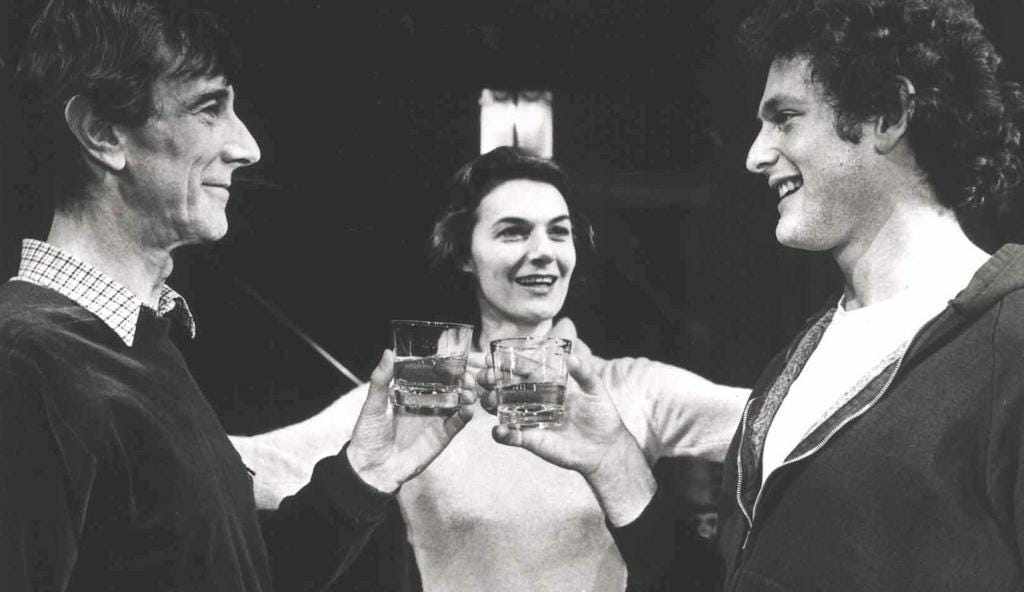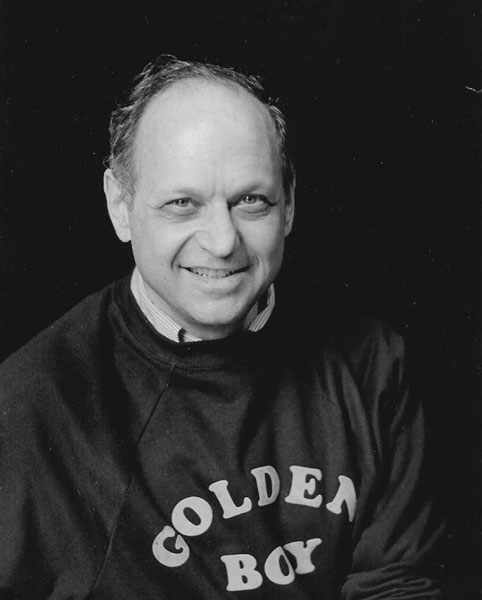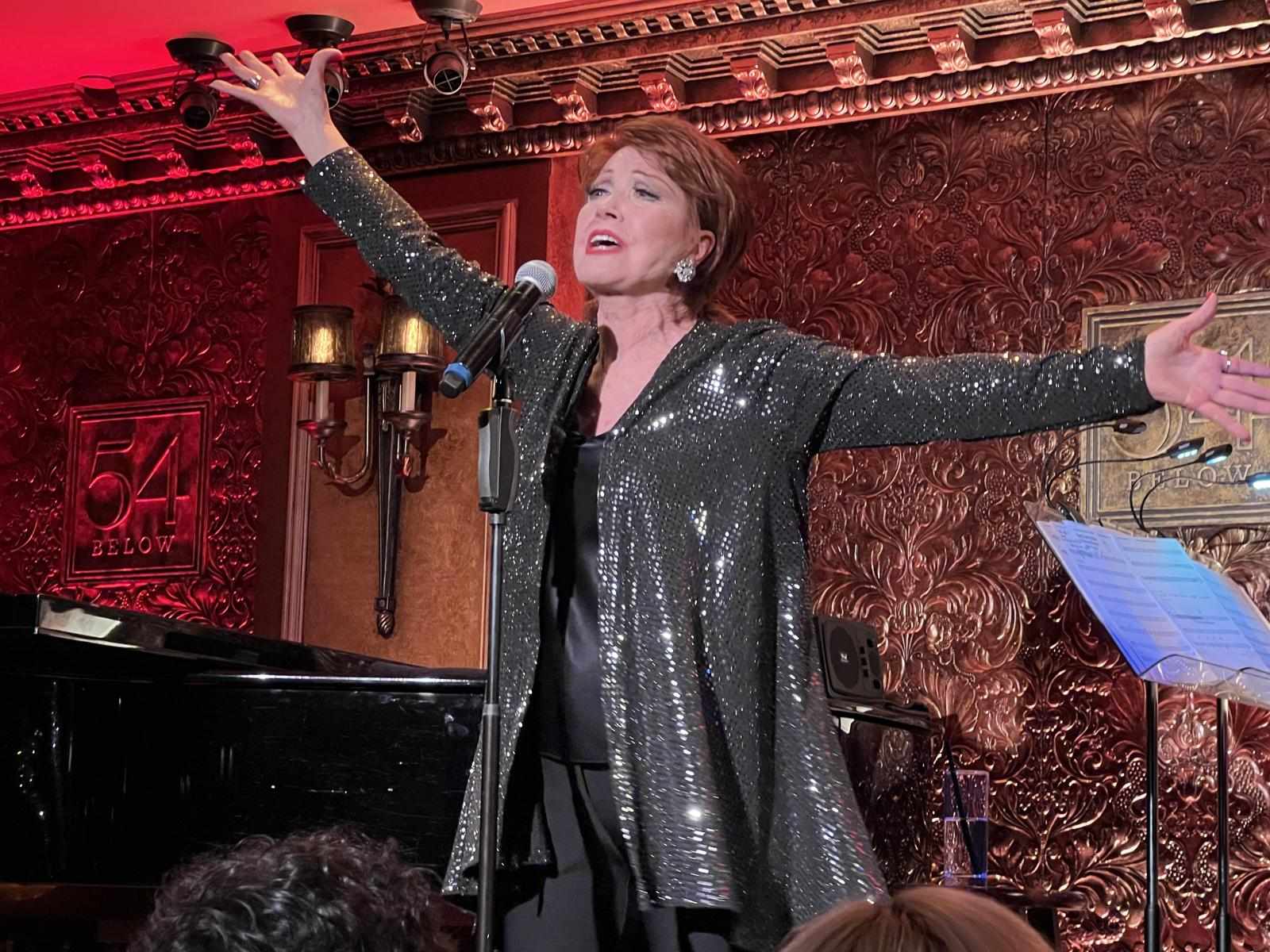
June 21, 2022: Theatre Yesterday and Today, by Ron Fassler
The artist Al Hirschfeld, a theatrical treasure of the highest order, was born 119 years ago today. Chronicling shows and stars for close to 80% of the twentieth century, he was a true show business immortal; proof being a career that checked all the boxes. 1) he was known throughout the world solely by his last name (check); 2) he was the recipient of not one, but two special Tony Awards (check) and 3) he was bestowed with a Broadway theater named for him (check). It doesn't get richer than that. He was also a near permanent fixture at opening nights for decades, invited by producers who were more than happy to have him lend stature to the proceedings. Though not tall, he towered over all others in his singular specialty — the art of the caricature.
Of course, titling this essay "Nina's Dad," refers to Hirschfeld's daughter Nina, perhaps the most famous person to consistently appear in the New York Times without ever really making an appearance. Beginning in 1945 — the year she was born — Hirschfeld would delightfully work her name way into his drawings for the rest of his career. When a number accompanied his signature on the bottom right, finding them all was essential; be it in an actress's hair or the folds of a coat (always good places to start). As a child, it was many a Sunday that began with my opening the Arts & Leisure section of the New York Time hoping there would be a Hirschfeld so I could find the Nina's. A silly game, really. Then again, the US army would come to use them as a way of training military bomber pilots to spot targets. On that, Hirschfeld dubbed the matter "sheer insanity."

There is no denying that anyone fortunate enough to have been drawn by "The Line King" experienced a significant rite of passage. Most lucky souls who appeared in the New York Times, either solo or as part of a cast, gained a touch of immortality. And that's not hyperbole. What made him unique was the graceful flow of a simple line; images imbued with wit, charm, and genuine affection. His was a rare gift, practiced relentlessly for close to eighty years. Not only did he work until his dying day at age 99, but he probably saw more Broadway shows than just about anybody. In his earlier and more mobile days, he regularly went out of town to see shows in Boston or New Haven to get his firsthand view of sets and costumes and what the actors were doing regarding movement and dance. His tireless work ethic was reflected in the joy he got from the performers he doted upon as he sketched. As theatre critic Mel Gussow wrote in his introduction to the 1999 book Hirschfeld On Line, "If an actor looks across the footlights and spots Hirschfeld, he can believe in the immutability of theatre. He is, as his wife Louise Kerz says, 'the logo of the American theatre.'"

As a child, Hirschfeld showed great promise as an artist. Under the recommendation of a teacher who had taken young Al under his wing, his mother uprooted the family to New York City in pursuit of bolstering her son's artistic ambitions. Hirschfeld was ten in 1913 and it marked the year he saw his first Broadway show, High Jinks. His rise was quick and age seemed not to have been an impediment as he was art director of Selznick Pictures in New York by eighteen (and yes, he began by drawing actors in films, not plays). By twenty-one, he was off to Paris via a $500 gift from his Uncle Harry who believed in his talents. Although Hirschfeld was able to spy Picasso, Hemingway and Stein (among others) hanging out in cafés, he wasn't part of their world. To make money, he was tap dancing (poorly) at a popular nightclub. Adventures in Spain and Morocco followed before heading back to New York, broke. In 1920, he was invited to a Broadway play by the show's publicist, Richard Many. It was at the Belasco (then only a thirteen-year-old structure) that he saw Deburau, starring Sacha Guitry. Absentmindedly, he drew a portrait of the actor on the cover of his program that got Many's attention, leading to selling the caricature to the show's producers and it being printed on the front page of the Herald Tribune the following Sunday. The rest is history.


Many feel removing the memory of long-forgotten Broadway veterans who have had theaters named for them with newer members of the community is a sacrilege. But when it was announced that the Martin Beck would become the Al Hirschfeld in 2003, barely any protest was heard (perhaps Beck having been its original owner and naming the theatre for himself, as opposed to it being named in his honor, had something to do with that). The official ceremony was timed to coincide with Hirschfeld's 100th birthday, but sadly, he passed away in his sleep six month prior to the date. Considering that the theatre first opened in 1924, just about the same time Hirschfeld's artistic career was taking off, the choice of the Beck felt like an appropriate one.

In 1948, Hirschfeld purchased a townhouse at 122 East 95th Street where he lived and worked for the rest of his life. On its top floor was his studio, that featured a drafting table and a Koken barber chair, just like the one he sat in as a boy in his native St. Louis. It suited him perfectly, reclining and taking cat naps as it suited him.
The drafting table and chair are on display at the New York Public Library at Lincoln Center just as you enter the building — a tribute to his artistry and a reminder that so long as his drawings stay with us, a part of him will too.

Due to the volume of his work, and the consistency of its quality, I doubt we will ever see a day when Hirschfeld's are not still part of the world of the theatre, no matter how many years go by. It's a legacy that will endure, considering that his drawings continue to sell for high sums.

David Leopold, archivist and creative director of the Al Hirschfeld Foundation, perhaps says it best: "Hirschfeld was not the best at what he did; he was the only one who did what he did."
If you enjoy these columns, check out Up in the Cheap Seats: A Historical Memoir of Broadway, available at Amazon.com in hardcover, softcover and e-book. Also, follow me here on Scrollstack and feel free to email me with comments or questions at Ron@ronfassler.org.





















Write a comment ...